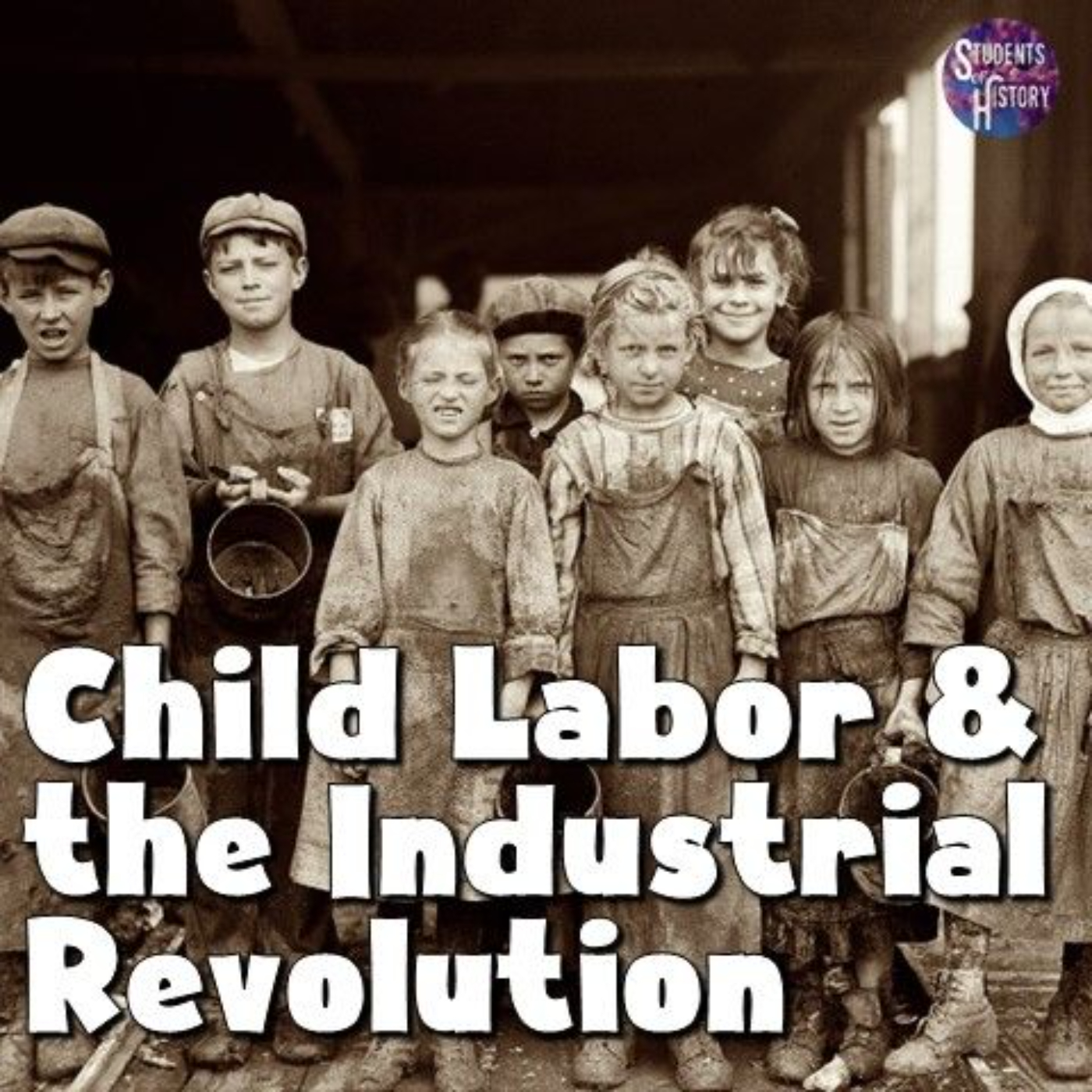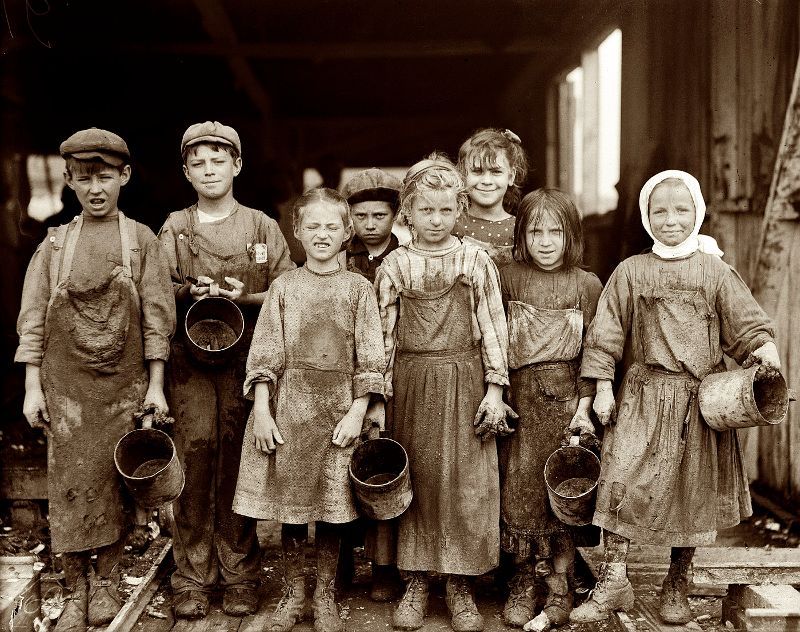Child Labor During the Industrial Revolution

It may be shocking to learn that before the 1900s in the United States, there were virtually no laws protecting children from the cruelties of child labor. As more Americans left farms to move to cities and urban areas during the Industrial Revolution, adults were not the only ones who found themselves working in large factories and coal mines.
At the turn of the century, children were mainly put to work because their families needed the money. Wages tended to be very low and more family members working meant more money coming into the household.
Employers also had reasons for hiring child laborers over adult workers. Children could be paid even lesson money and, since they were smaller, could more easily fit between machines and into tighter spaces.
Consequently, these children often did not go to school. While Massachusetts was the first state to require children to attend school in 1852, most states had no laws on education until around the turn of the century. Mississippi became the last to require school attendance for children in 1918.

The conditions under which the child laborers worked were very dangerous. Not only did they have to work long, grueling hours, they also faced threats posed by the high powered machinery.
It was common for a child to lose a limb or a finger, as they did not have the most extensive training on how to properly work the machinery in their factory.
Children who worked in coal mines experienced similar conditions: miners toiled away in spaces with poor ventilation and would frequently develop lung diseases. Sometimes, they were made to work around dangerous chemicals, which caused them to become sick from the toxic fumes. It was normal for a child to log between 12 and 14 hours of work a day.
Other jobs that children held included selling newspapers on the street and sweeping chimneys. In all cases, dangerous or not, children were paid tremendously low wages at a very high cost to their health and their education.

As word of the danger spread in the early 1900s, a handful of groups began to organize around protecting children and banning the use of child labor. The National Child Labor Committee was formed in 1904 to abolish all child labor. A few years later, President Theodore Roosevelt hosted the first White House Conference on Children.
It was due to their efforts and the work of other anti-child labor organizations that the first laws were proposed and passed at the state level.
It was not until the 1938 Fair Labor Standards Act that child labor would be regulated at the national level. President Franklin D. Roosevelt signed this legislation that was promoted by his sectary of labor Frances Perkins. Perkins was the first woman to serve in a presidential cabinet.
The Fair Labor Standards Act banned children under 18 from working dangerous jobs and children under 16 were forbidden from work in manufacturing or mining or during school hours. It also required workers to be paid minimum wage and higher overtime pay.
Today, most children are not put to work, as school has become their priority. While teenagers can certainly have part-time jobs, this system is now heavily regulated by the states and laws protect the well-being of minors who are employed.